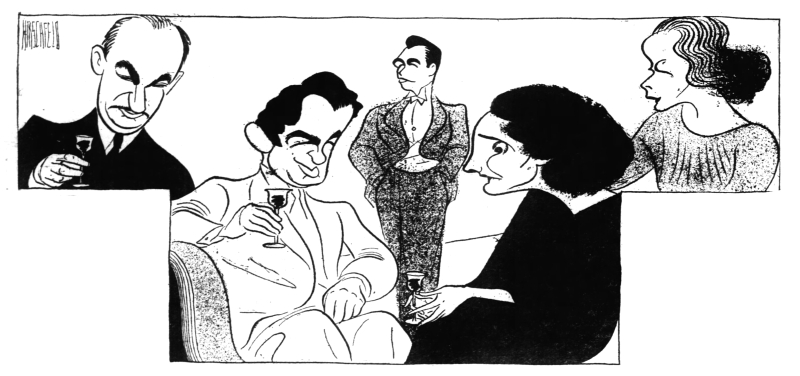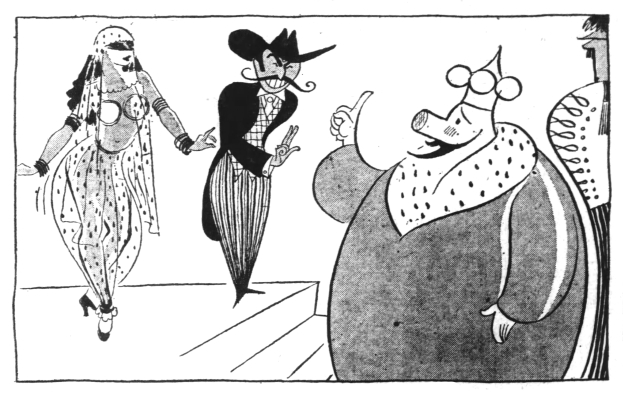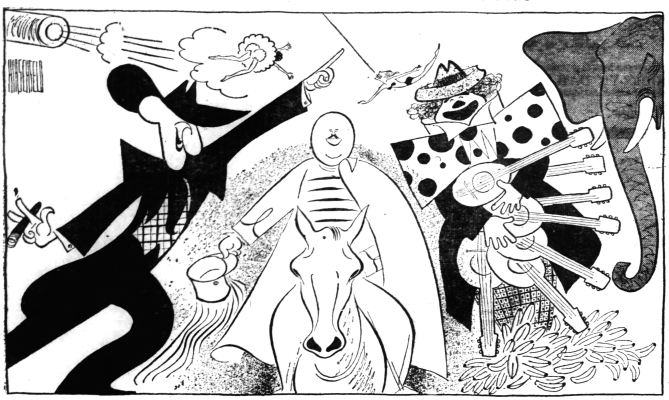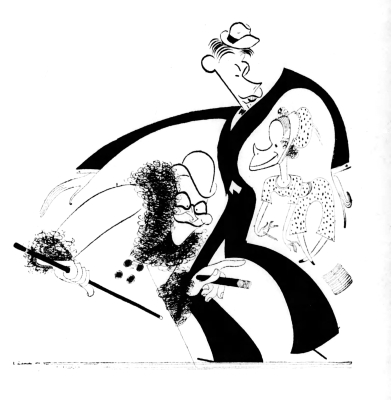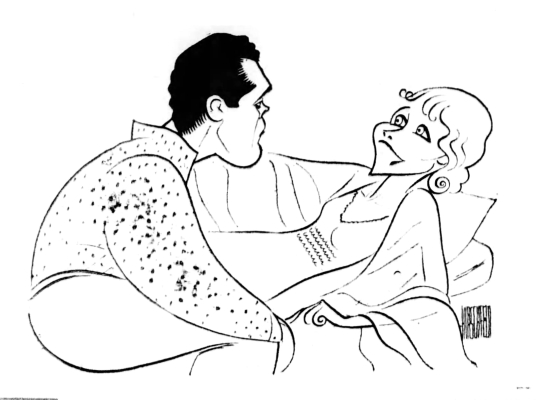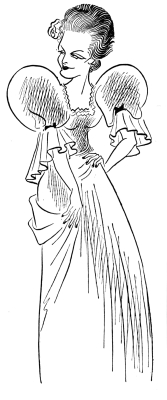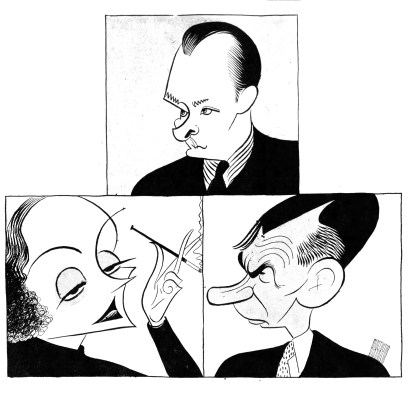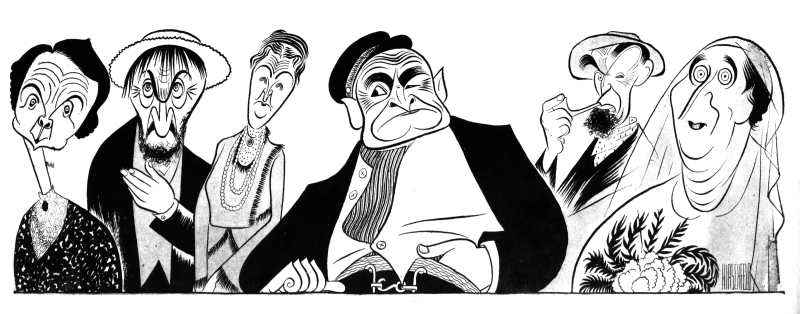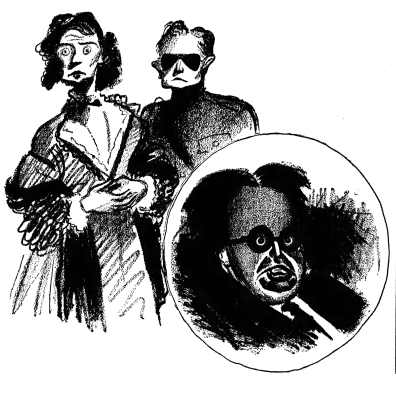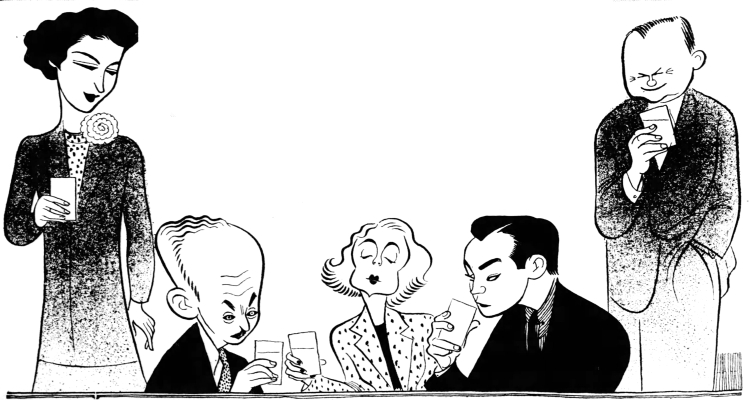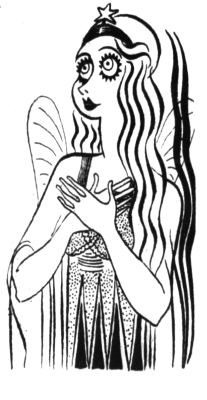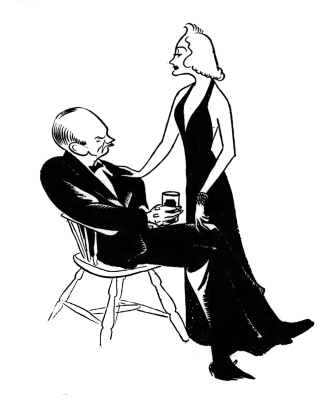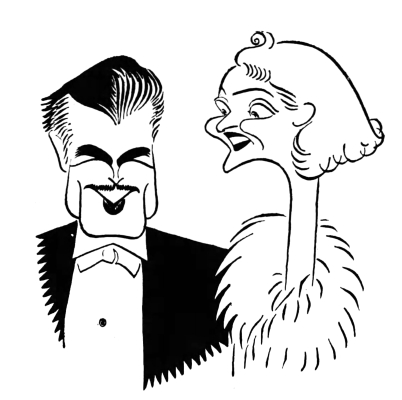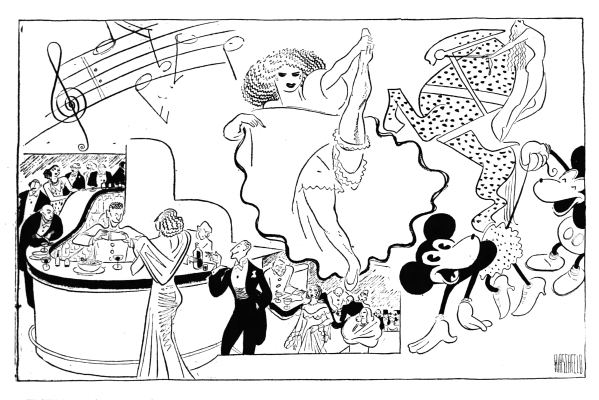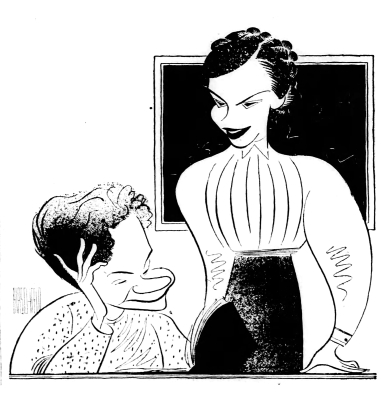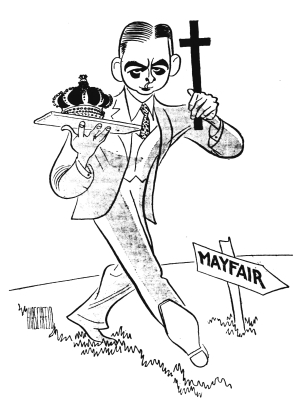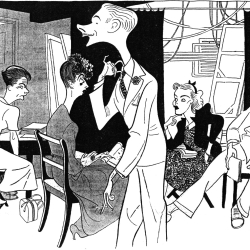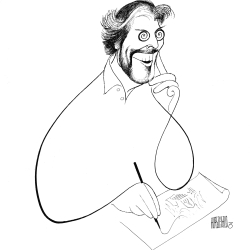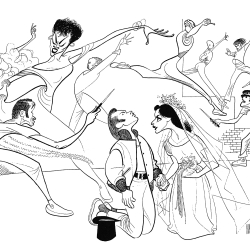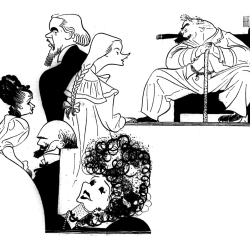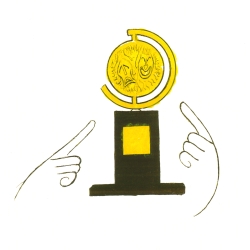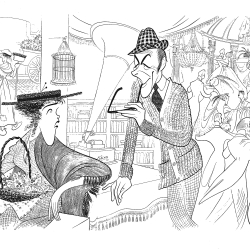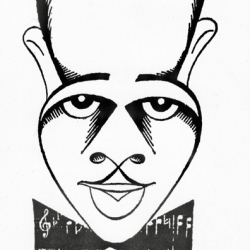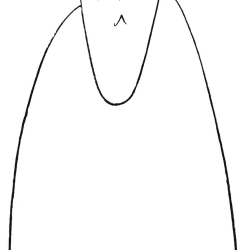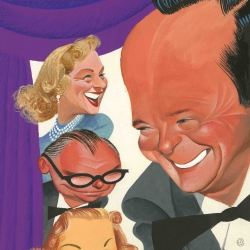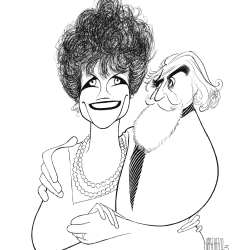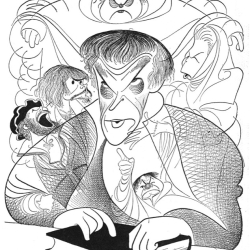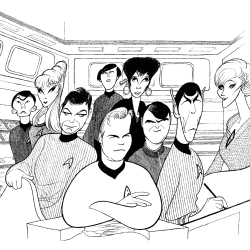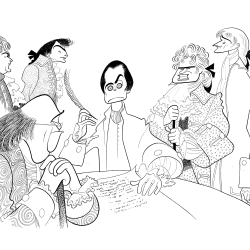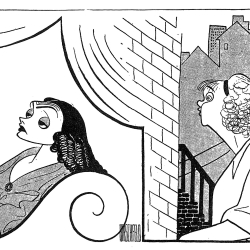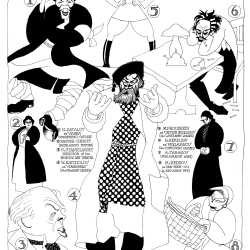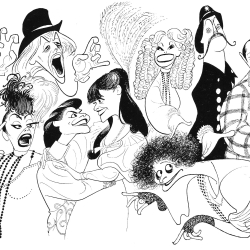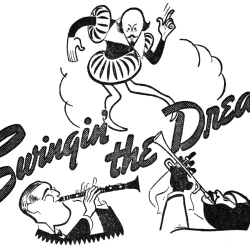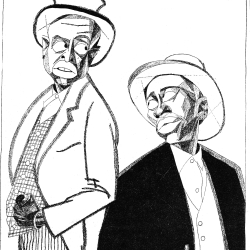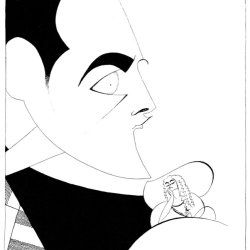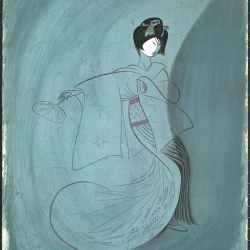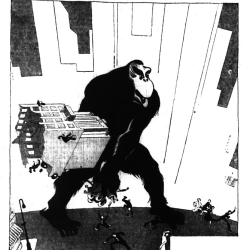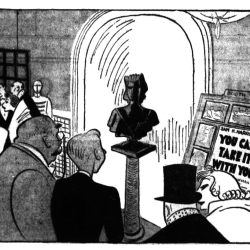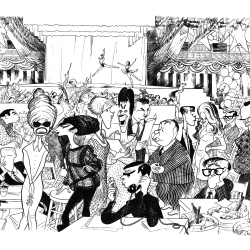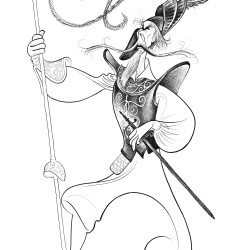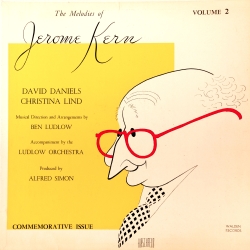New Discoveries in Brooklyn
There is a tendency to think of Hirschfeld as a New York Times artist. He did, after all, appear on average every other week in the paper for seventy-five years. But it was not the only New York paper he appeared in, or even the first. In 1943, an editor at the Times complained to Hirschfeld that he did not know what paper he was reading because all of them had Hirschfeld drawings, which led to his exclusive arrangement with the Times for New York newspapers. For a more than a decade before, Hirschfeld appeared regularly in three different papers: The Times, the Herald Tribune and the Brooklyn Sunday Eagle. While many know the first two, Hirschfeld did memorable work for the Eagle where occasionally the editors turned over a whole page to the artist to work his magic.
We recently looked through eleven years of the Drama sections of the Eagle and were delighted to discover works we had never seen including a drawing of the original productions of Porgy and Bess, Awake and Sing, and Jumbo, as well as portraits of Josephine Baker, Tallulah Bankhead, and Walter Huston. All in all, we discovered more than 30 works that have not been seen in 80-plus years!
The Eagle featured a number of caricaturists over the years, and Hirschfeld’s first drawing for the paper was of the musical revue, Rain or Shine, starring Joe Cook. It appeared in February 1928, just three weeks after Hirschfeld’s first drawing for the Times. He was an irregular contributor until the Fall of 1934 when his work started to appear two or three times a month. When the paper was purchased in 1936 by new owners, caricature disappeared for nearly a year before returning with a Hirschfeld drawing of a forgotten Arthur Kober comedy, Having Wonderful Time, which was later transformed into a hit musical Wish You Were Here.
One of the highlights of the discoveries was a full page drawing on March 10, 1935 (seen above), of the original production of Anything Goes featuring Ethel Merman paired with a revival of Marc Connelly’s The Green Pastures. While Hirschfeld often covered the front page of the section with a two or three individual drawings, this is the only time that he would have an entire page to fill with one drawing.
Hirschfeld’s tenure at the Eagle came to end during a newspaper strike in 1939. The union asked the artist to do a drawing of the owner who Hirschfeld portrayed as a turkey. The image was blown up and put on trucks that blocked the entrances to the paper. When the strike was settled, one of the conditions that management made as part of the agreement was that they would not have to re-hire Hirschfeld. The union agreed, much to Hirschfeld’s chagrin, and he never appeared again in the paper.


